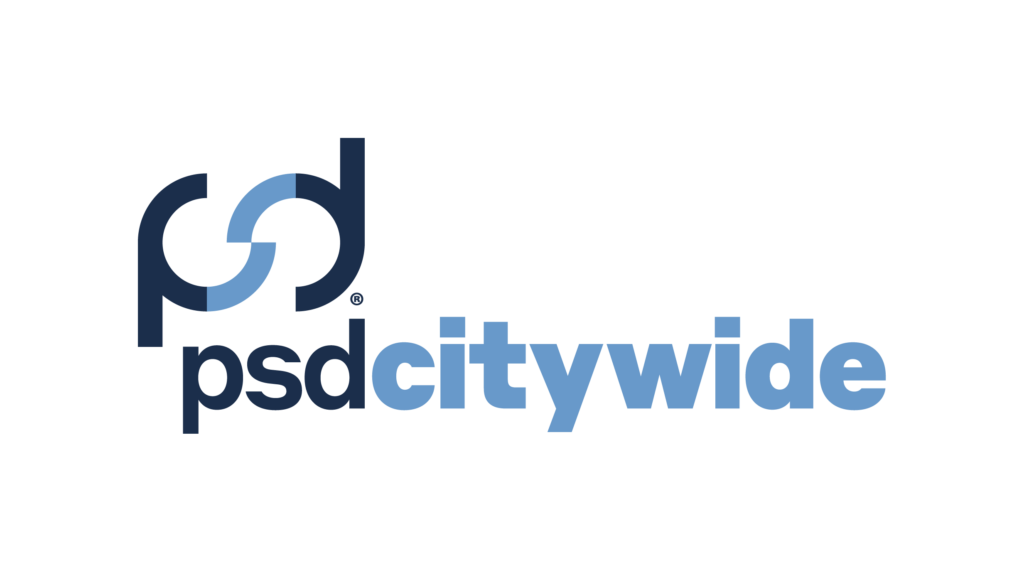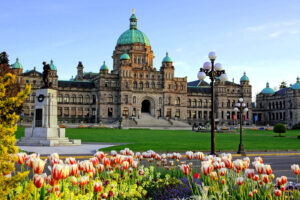Local business owners in many municipalities across the country are feeling the sting of skyrocketing property taxes. This is perhaps nowhere more apparent than in Calgary and Vancouver. Years of escalating property taxes on the business community recently forced both cities to provide small businesses with property tax breaks, albeit not large ones.
The backlash has been so significant that outcries from the public have signaled the need for substantial relief for independent business owners, or else they will be forced out of our neighbourhoods. Their potential exodus could translate into fewer amenities, less local jobs, and a smaller tax base.
Municipal governments should acknowledge and address problematic property tax systems that are contributing to the overarching problem. Municipalities across Canada can learn through the shortcomings that led to the property tax troubles in Calgary and Vancouver.
CALGARY’S STORY
The City of Calgary encountered a frenzy of upset business owners when it sent out its property tax bills at the beginning of June this year. Due to Alberta’s recent economic downturn, the downtown core in Calgary experienced mass vacancies that caused a $300 million shortage in tax revenue. Despite constant warnings from stakeholders for years, spending concerns went unaddressed, and no plan was made to fairly distribute the tax burden across the entire tax base.
Instead, taxes on commercial property owners outside of the downtown core increased; a decision that forced some local entrepreneurs to move their business elsewhere, or in dire situations, permanently close up shop.
Based on survey data from the Canadian Federation of Independent Business (CFIB), 56 percent of small businesses in Calgary saw their bills increase by more than 11 percent in 2018. Further, 14 percent of businesses saw increases greater than 30 percent. It’s important to note that this was before this year’s property tax problems occurred. We expect these results would be significantly more severe if the question were asked today.
Calgary’s business community was outraged at these increases, and it did not take long for the frustration to boil over. In early June, hundreds of people participated in a rally on the steps of Calgary’s City Hall, demanding that city council take immediate action to alleviate property tax increases local businesses were facing.
In response, Calgary’s city council hastily put together a plan to reduce non-residential property tax bills by 10 percent, using $131 million from reserves (and $60 million specifically coming from cuts to the 2019 city budget). While the City did take action and respond to the business community’s outcry, Calgary’s property tax story will require more action before reaching a happy ending.
Relief is welcomed; however, a 10 percent reduction is simply not enough as a significant portion of businesses will still be left with substantially large bills. Additionally, if the property tax problem had been acknowledged earlier, steps could have been taken to ensure any necessary cuts to the City’s budget were made thoughtfully and efficiently. Without substantial, systematic and long-term change, Calgary’s tax problems will continue to burden the business community.
VANCOUVER’S STORY
In recent years, many stories about Metro Vancouver’s property scene have focused on the escalating cost of residential properties. It’s no secret that a myriad of factors have made property ownership nearly unattainable for the average resident. This is a serious problem and one that all three levels of government have finally attempted to take action on.
Receiving less attention until recently was the property tax crisis facing the local business community. To understand how things have shifted, one needs to look no further than the median tax bill data. Over the period of 2010 to 2017, the total property tax bill on the median property value in Vancouver has gone up by nearly $20,000 to over $44,000, a total increase of 75 percent. It is important to note that a large portion of the tax revenue is allocated to the provincial government and other agencies, who also need to take responsibility for the situation.
It is much worse for businesses in areas of densification. Some properties across Metro Vancouver have faced triple digit percent increases as property values skyrocket from zoning changes and nearby development. For example, one business owner owed nearly $30,000 in property taxes on his parking lot that has room for about ten cars, an increase of 200 percent over the past three years. Increases of this magnitude should be better managed so that business owners are not put into a sudden unstable financial situation.
Thankfully, we’re seeing some modest progress. In April of this year, Vancouver City Council took the bold move of shifting some of the tax burden from commercial properties to residential properties. Over the next three years, a total shift of two percent will occur. This represents about $500 in tax relief for an average business owner. While, again, this is a drop in the bucket, it is a start and signals an acknowledgement of the problem. The shift will help make the system slightly fairer, but more will need to be done.
WHAT WENT WRONG AND HOW CAN IT BE IMPROVED?
The property tax problems experienced by Calgary and Vancouver were by no means unforeseen, nor were they unavoidable. There were numerous indicators that showed the property tax situations in both cities was intensifying. Escalating property taxes are an issue that has the potential to affect any municipality in Canada, and there are many municipalities currently experiencing early symptoms of similar property tax issues.
Municipalities are the primary mechanism that can create an uneven distribution of property taxes, and therefore have the greatest responsibility in creating more tax fairness in their communities. The following are several areas that local governments should focus on to avoid property tax problems arising in their municipalities.
BURDEN ON BUSINESS
Problem: The property tax burden is disproportionately higher for commercial property owners. This is not just the case in Calgary and Vancouver, but the same holds true for nearly all municipalities in BC and Alberta.
Businesses pay a far greater proportion of the property taxes than their use of municipal services warrants. A 2007 study commissioned by the City of Vancouver showed that businesses paid $2.42 for every dollar of services consumed while residential property owners only paid $0.56. Business owners currently pay for about 45 percent of the total property tax burden and yet consume far less services than residents. Put simply, this is unfair, inequitable, and puts huge pressure on local businesses, especially the smaller ones.
Solution: When deciding the share facing each property class, municipalities need to begin using a benchmark to justify its decisions, while remaining transparent and accountable. We recommend the following:
1) Ensure the share of property class’s taxes paid does not exceed the share of services consumed. In an ideal system, what you pay is what you should get in return. For instance, if businesses consume 45 percent of total services provided by a municipality, then they should only have to pay 45 percent of the total tax bill. Small businesses typically operate on razor thin profit margins and simply cannot afford to subsidize the consumption of municipal services by residents.
2) Ensure the share of property of taxes paid by a property class does not exceed the share of total property value. For instance, if businesses make up roughly 45 percent of the total property value in the municipality, then they should only have to pay 45 percent of the total tax bill.
SPENDING
Problem: Growth in operating spending in municipalities across Canada is on an unsustainable path. It’s no surprise that in BC, property taxes have increased by 42 percent over the past 10 years, when municipal operational spending has increased by 43 percent in the same time period (see Figure 1; all numbers adjusted for inflation). In the case of Alberta, municipal operational spending has increased by 62 percent between 2006 and 2016 when the population only grew by 24 percent. These numbers are not sustainable for the residents and business owners who inhabit these cities. Exacerbating this problem, municipalities can be faced with a continuous threat of downloading service delivery from higher levels of government.
Solution: Look at ways to reduce municipal operational spending in order to reduce the overall tax burden on business owners and residents. Ultimately, municipalities should strive to ensure that real operating spending growth does not exceed inflation plus population growth. While municipalities must increase their spending to provide services to more people, they must also adjust their spending to account for changes in price levels across the economy as a whole; increasing municipal spending in excess of these two factors is unsustainable. In economic downturns, municipalities should follow in the footsteps of businesses and families, focus on “need-to-haves” and put a pause on the “nice-to-haves”. This concept holds true even in situations where municipalities are suddenly responsible for increased obligation of service delivery from downloaded services. Prioritization of operating expenses and maintaining a reserved service offering menu can lessen the impact of potential service downloads and reduce the frequency of tax increases outside a phased and planned schedule.

Figure 1. Property Tax and Operational Growth Spending, Inflation Adjusted (2006-2016)
ASSESSMENT SYSTEMS
Problem: Assessments are done by different bodies in each province using different methodologies. The method of assessment can have serious effects on how property tax bills are calculated. For example, Metro Vancouver’s assessment system has contributed greatly to their property tax issues. A property is assessed based on its “highest and best use.” If a large mixed-used multi-story building (e.g. businesses on the first floor with residential units above) is built next to a single-story business property zoned for development, BC Assessment will assess that single-storied building on the potential of the lot, not the actual building that exists. While there is merit to this method, as it encourages development, the problem is it is then entirely taxed at the much higher commercial tax rate (nearly 4x in Vancouver in 2019).
Solution: Reform how we assess and tax commercial properties. There are several ways to address this, but any progress towards reducing the tax burden on potential development is needed.
One option is split assessment classification where the residential potential and current commercial value are separated. Due to the significant disparity in residential and commercial rates in the vast majority of Canadian municipalities, this would see significant tax savings and reflect the true origin of the underlying value of the property. Figure 2 shows a simple example of the same property under the different methods of assessment in the City of Vancouver for a $3,000,000 split 75 percent residential potential and 25 percent current commercial. Under split assessment classification, the theoretical business would see savings of nearly $9,000. Alternatively, the development potential could be taxed at a new property sub-class that is set at a much lower rate than commercial.

Figure 2. Current Assessment vs. Split Assessment Classification, City of Vancouver 2018
As it stands, Metro Vancouver, the BC Government and BC Assessment are currently consulting on how to reduce the property tax burden on the small business community. Jurisdictions across Canada should evaluate how they assess properties and ensure their system does not having the same damaging effects seen in BC.
CONCLUSION
In closing, municipalities across Canada should review their property tax systems to avoid similar problems to those in Calgary and Vancouver. If the impacts of unbalanced property tax distribution are not acknowledged, businesses, their employees, and the community will suffer. There are many ways that municipalities can improve outcomes in their communities, but this will require serious political leadership. Local governments should work alongside provincial officials to implement the recommendations proposed above. A fair system will allow room for local businesses to succeed.
KEYLI KOSIOREK, MPP is a Policy Analyst for the Canadian Federation of Independent Business (CFIB). She holds bachelor’s degrees in Economics and Natural Science from the University of Calgary, and a Master of Public Policy from the School of Public Policy.
AARON AERTS, MA is the Western Economist for CFIB. He holds a bachelor’s degree in Economics and Political Science from the University of Ottawa and a Master of Arts in Economics from Carleton University.



